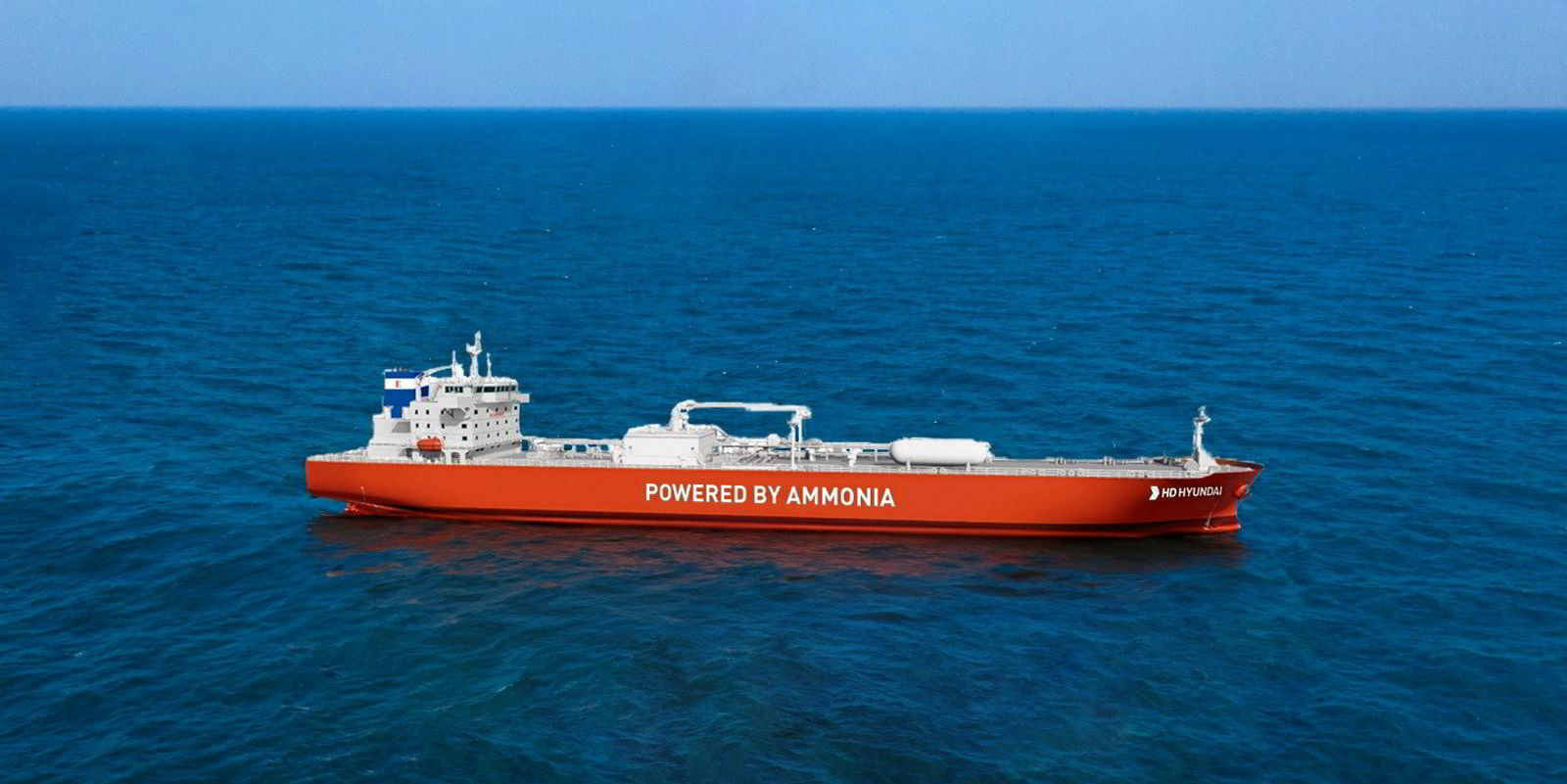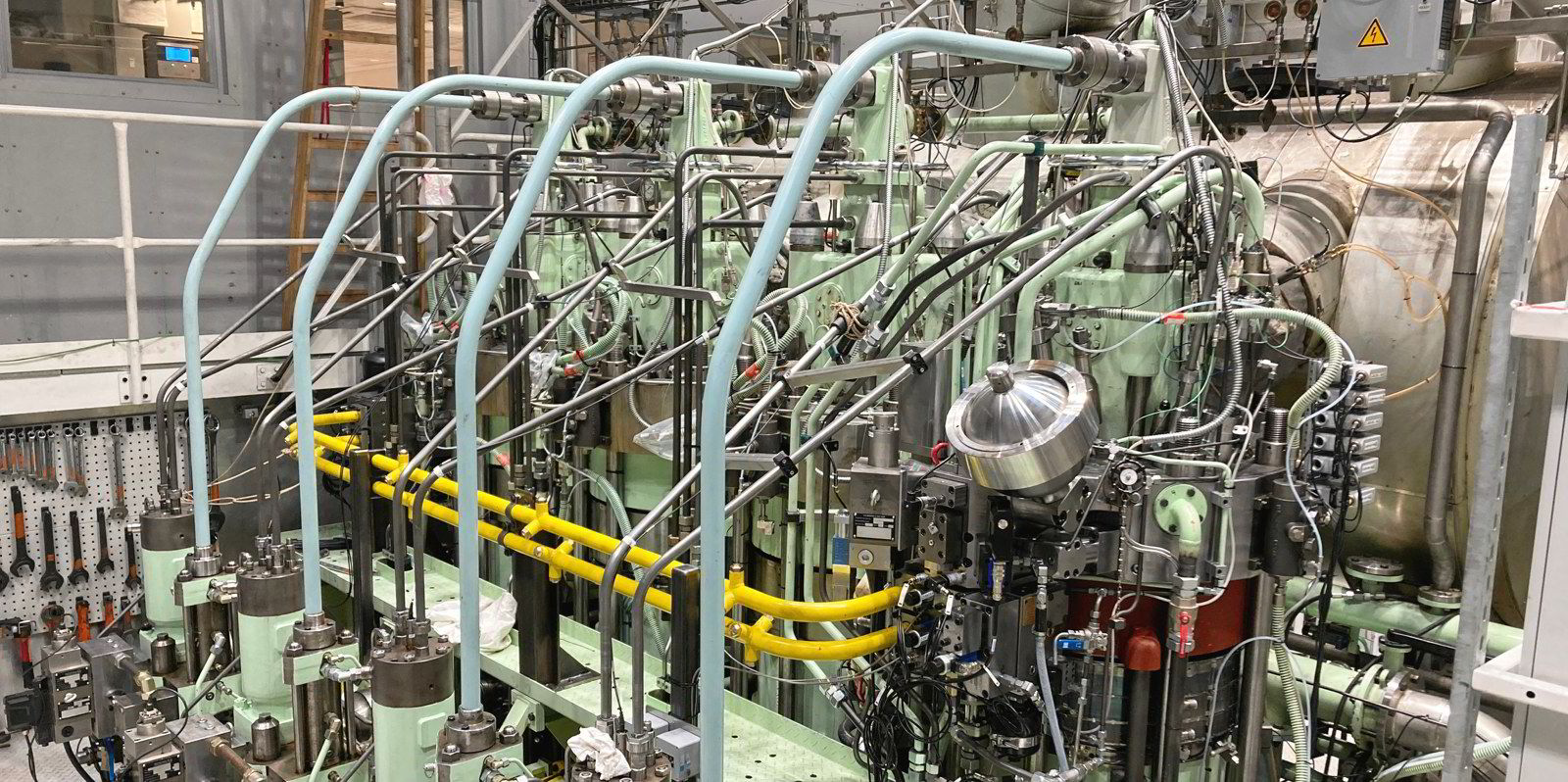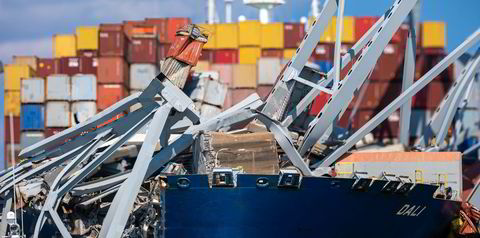Joint venture Exmar LPG has made a pioneering leap by choosing to build two on-order midsize gas carrier newbuildings that the company expects will be the world’s first ammonia dual-fuel vessels.
The company, a joint venture between Belgian gas shipowner Exmar and Stonepeak-controlled owner Seapeak, said it intends to go ahead with ammonia as a fuel for two 46,000-cbm MGCs, which it has ordered at Hyundai Mipo Dockyard in South Korea.
The engines will be delivered by WinGD, and the fuel supply system will be by Wartsila Gas Solutions.
The duo, which will carry their ammonia bunkers in two 500-cbm deck tanks, are scheduled for delivery dates in early 2026.
“The ships will be the first-ever oceangoing vessels to be propelled by dual-fuel ammonia engines, allowing for close to zero emissions trading when using ammonia,” the company said.
Exmar executive director Carl-Antoine Saverys said: “We are proud to be developing vessels with an operational carbon footprint reduction of 90%, which significantly exceeds the International Maritime Organization’s emissions reduction targets.
Speaking to TradeWinds, Saverys said: “That’s a revolution in our shipping industry.
“This is a first step in the right direction, but it will take time,” he added, accepting that there will need to be a buildout of infrastructure on ammonia.
Saverys said the newbuildings were ordered earlier this year as LPG dual-fuelled ships, but the company has now declared the option it was holding to build them as ammonia dual-fuelled vessels.
The choice of the new fuel is believed to have added around $2m to each vessel’s price, which Clarksons’ Shipping Intelligence Network listed as having been contracted in March 2023 at $73.4m each.
Not taken lightly
Saverys said the fuelling decision has not been taken lightly — acknowledging that ammonia is a toxic product. He said it had involved a great deal of work both technically and operationally but that Exmar LPG has had good support from both the yard and WinGD, along with classification society Lloyd’s Register and the Belgium flag state.
Exmar LPG said: “Throughout the design and development phase of the vessels, meticulous attention has been given to operational safety when introducing a toxic substance into the engine room.”

While the company expects the two ships to be the world’s first delivered vessels running on ammonia, Saverys said Exmar — which has built something of a reputation for being first up with new ship designs like its move into floating storage and regasification units over 20 years ago — is not trying to be first.
“When it comes to new technology, it would be nice for someone else to lead the way,” he said.
But he also highlighted that Exmar is probably the independent shipowner with the most ammonia experience.
Since the early 1990s, the company has transported close to 100m tonnes of ammonia — his father, Nicolas Saverys, grew Exmar on shipping the cargo — with around half of the organisation’s MGC fleet currently trading the product.
- Grey or brown ammonia: Produced from fossil fuels.
- Blue ammonia: Produced using natural gas but with CO2 capture and storage.
- Green ammonia: Produced from hydrogen made through water electrolysis using renewable energy.
Saverys said in some years, Exmar’s ammonia shipments can stack up at 5m tonnes in a global market where around 16m tonnes per annum is now moved by sea.
The company usually charters out its vessels for periods ranging from six months to one year or longer and is currently in discussions with potential clients on the ships.
Saverys believes the new vessels will likely trade between the US and Europe or possibly to the Far East or from the Middle East to Asia.
Blue or green
He said the objective is for them to bunker blue or even green ammonia if any chartering counterparties they are talking to can supply the latter.
“The idea is definitely not to burn grey ammonia because it doesn’t make any sense,” he said.
The groundbreaking newbuildings will be fitted with WinGD’s upcoming X52DF-A ammonia dual-fuel engine, which is due to start undergoing tests in the second quarter of 2024.
Saverys said he is “very confident” that these will be delivered in time for Exmar LPG’s newbuildings as WinGD has done a great deal of preparatory work prior to the testing. But he added: “This is a pioneering project. We should be constructive about the way we tackle it.
“We will only be able to redefine the industry if everyone is actually playing their part and respecting each other’s work.”








